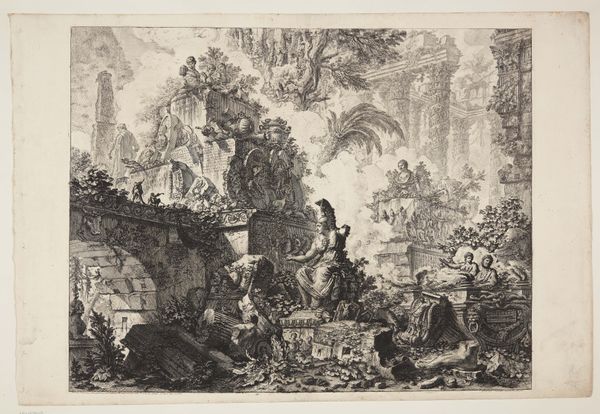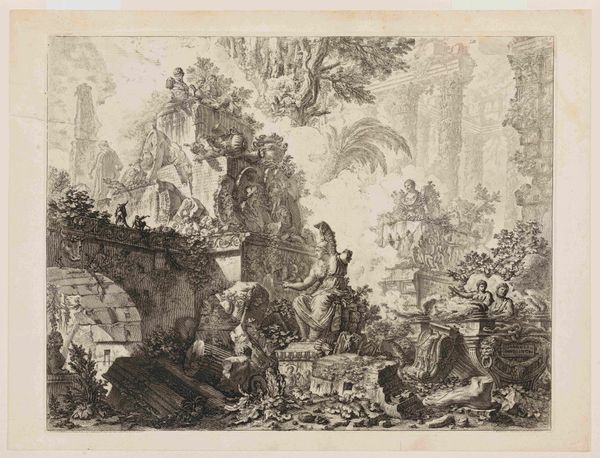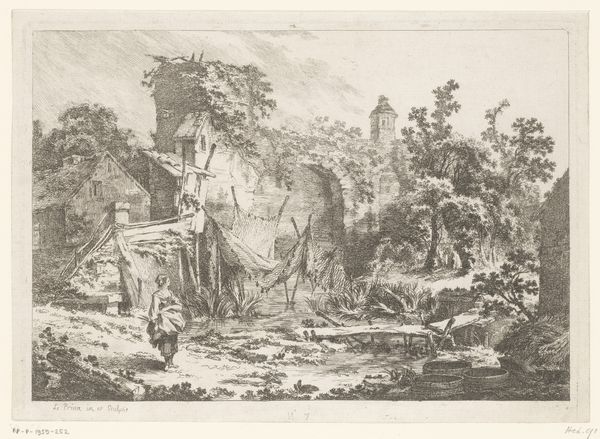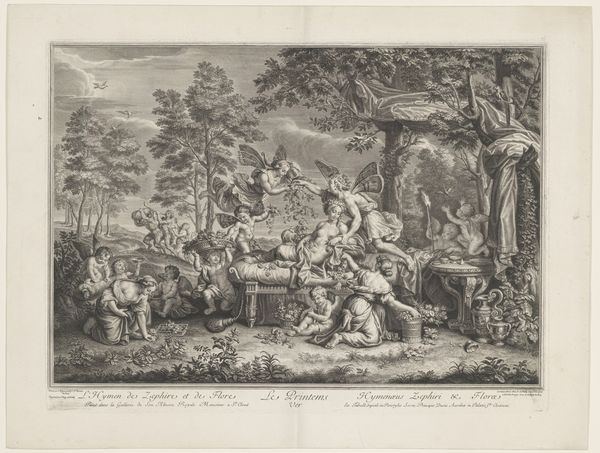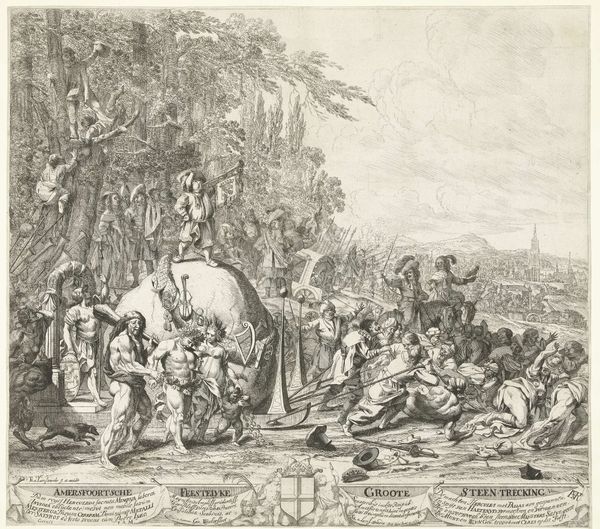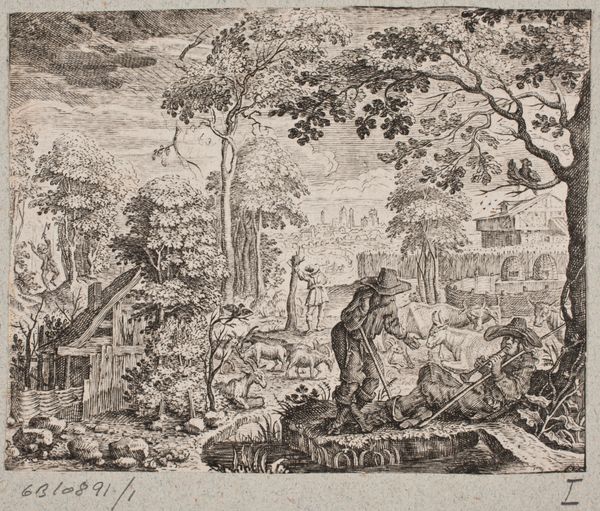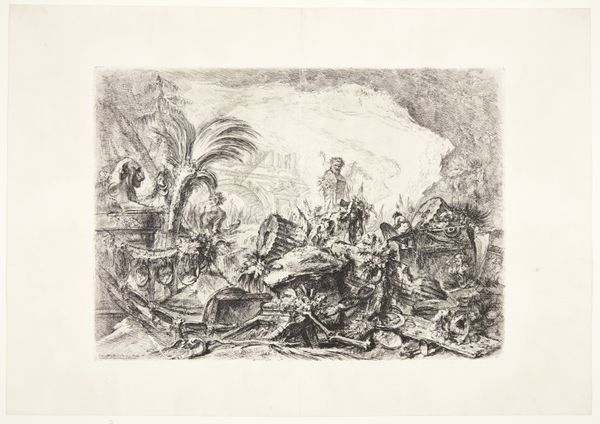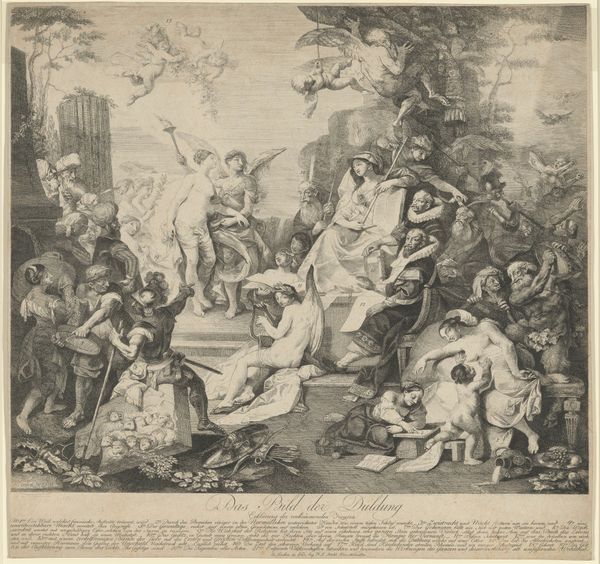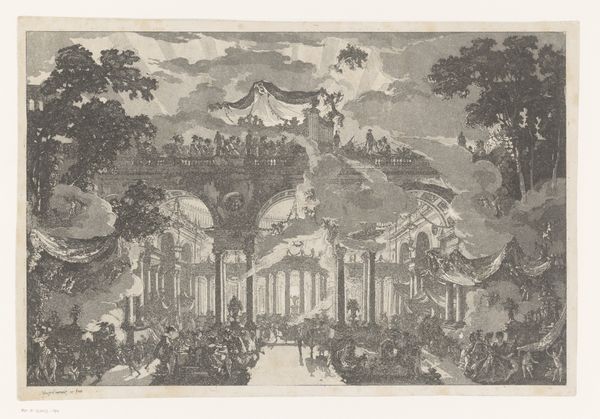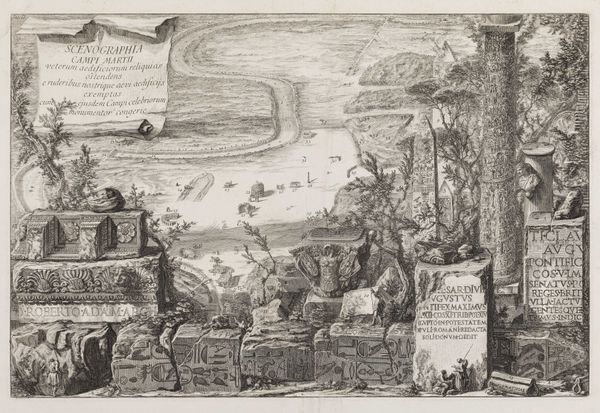
print, etching, engraving
#
baroque
# print
#
etching
#
engraving
Dimensions: 19 5/8 x 25 1/4 in. (49.85 x 64.14 cm) (plate)
Copyright: Public Domain
Giovanni Battista Piranesi made this etching titled "Statue of Minerva" sometime in the 18th century. In it, we see the iconic Roman goddess of wisdom, arts, trade, and defense amidst a whirlwind of classical allusions. Piranesi was working in Rome at a time when the city's ancient past was being rediscovered and re-imagined. This image is a testament to the fascination with antiquity, but also to the way that the past could be reshaped to suit contemporary tastes and ideologies. The image creates meaning through visual codes and cultural references, offering a romanticized vision of Roman grandeur. To truly understand Piranesi's work, we might delve into the history of archaeology, the Grand Tour, and the rise of Neoclassicism. Understanding the social and institutional context allows us to appreciate the complex interplay between past and present that defines this fascinating work.
Comments
minneapolisinstituteofart almost 2 years ago
⋮
Piranesi’s views of Rome seem to document the city, but they distort reality for expressive purposes. This opening image for the series makes clear that for Piranesi, Rome’s ruins were fuel for dreams and fantasies. Here Minerva, Roman goddess of wisdom and the arts, presides amid tumbledown splendor. At the upper left, Hercules, symbol of strength, has turned away from this place. With Piranesi’s help, we can recreate in our minds the lost grandeur of this mighty imperial capital. Our hearts might beat faster before this imagined glory, yet we may also mourn its passing as we follow Piranesi’s ramble through the wreckage.
Join the conversation
Join millions of artists and users on Artera today and experience the ultimate creative platform.
